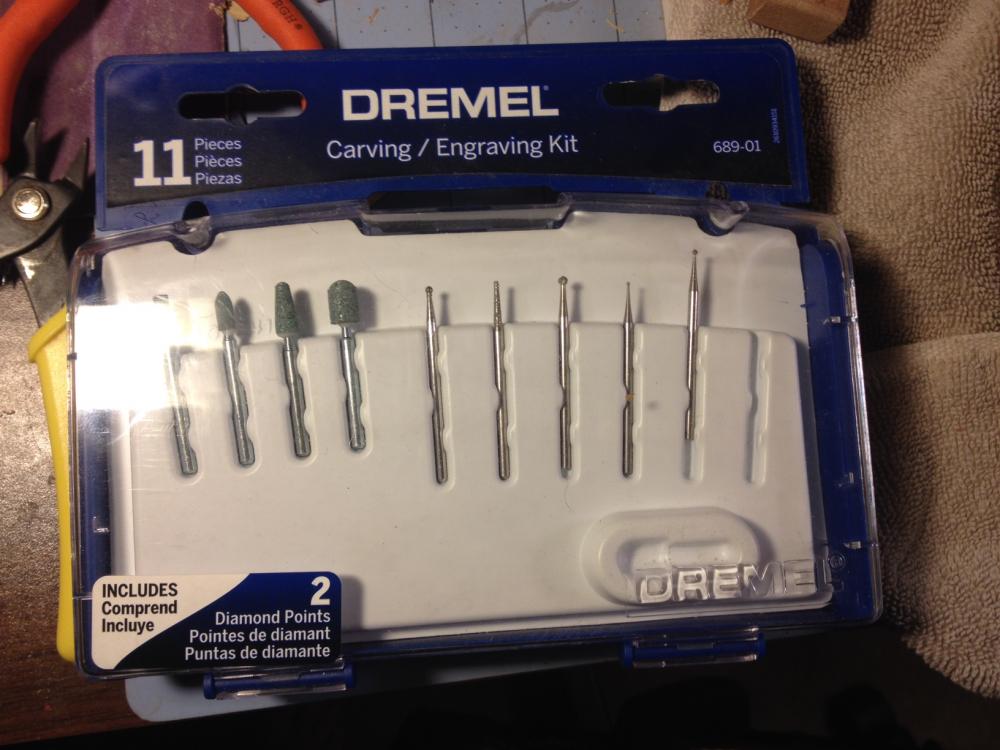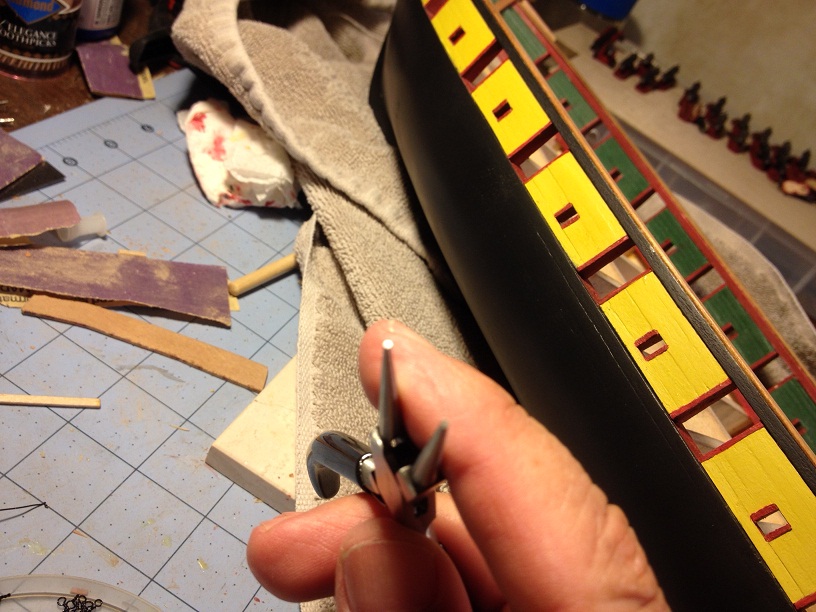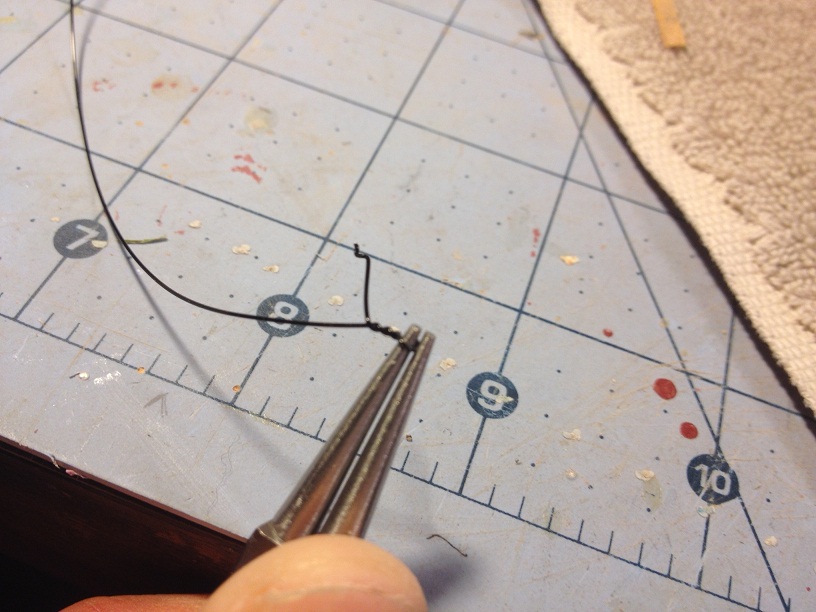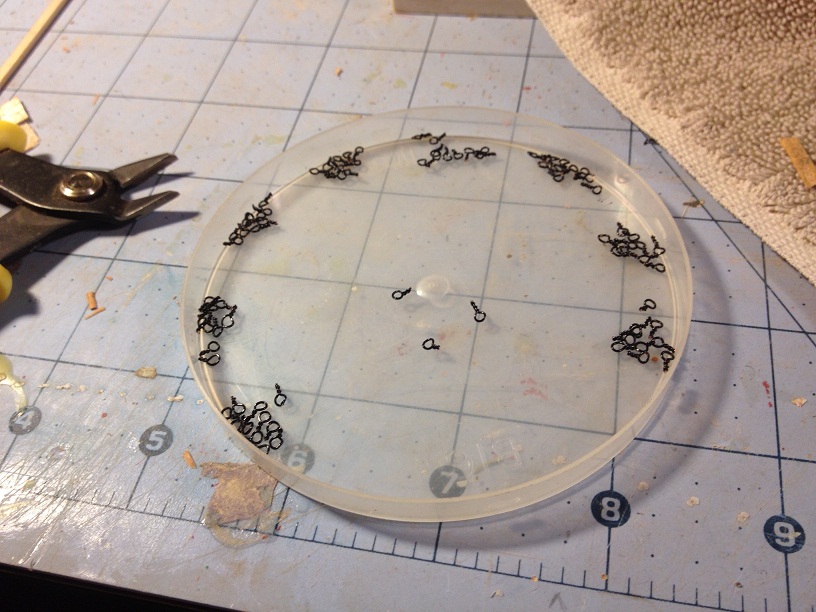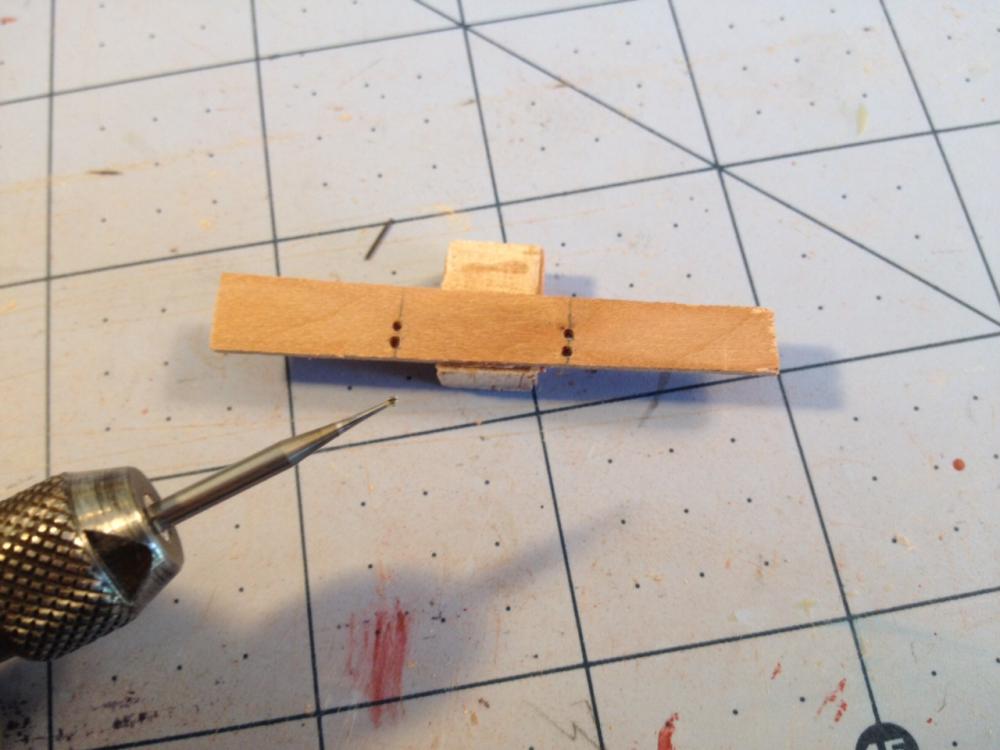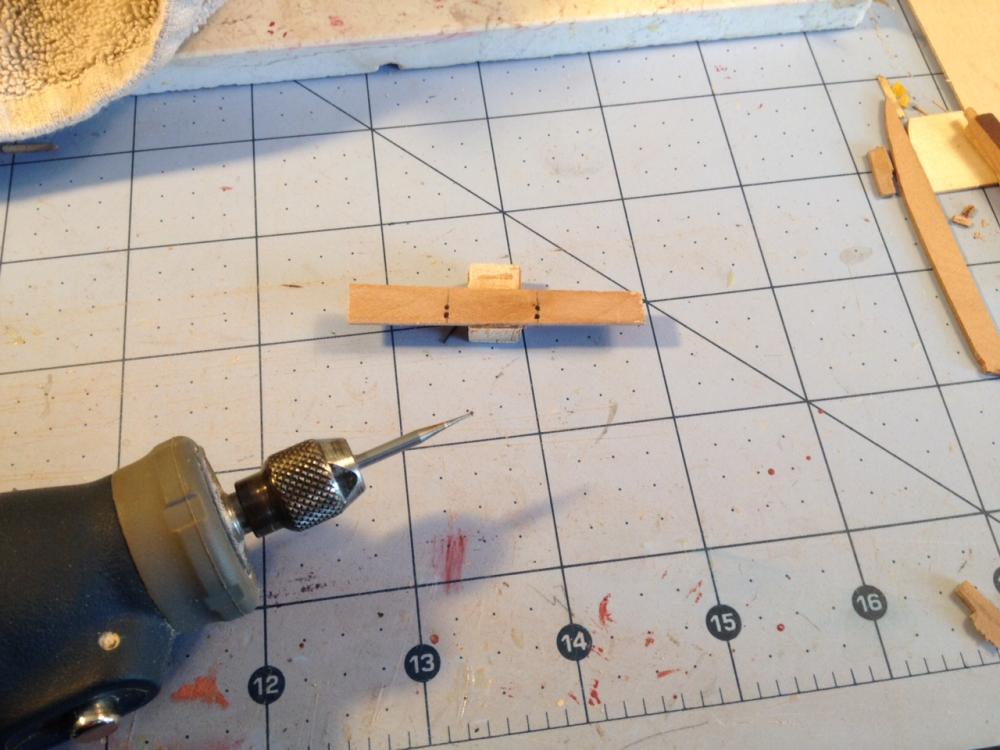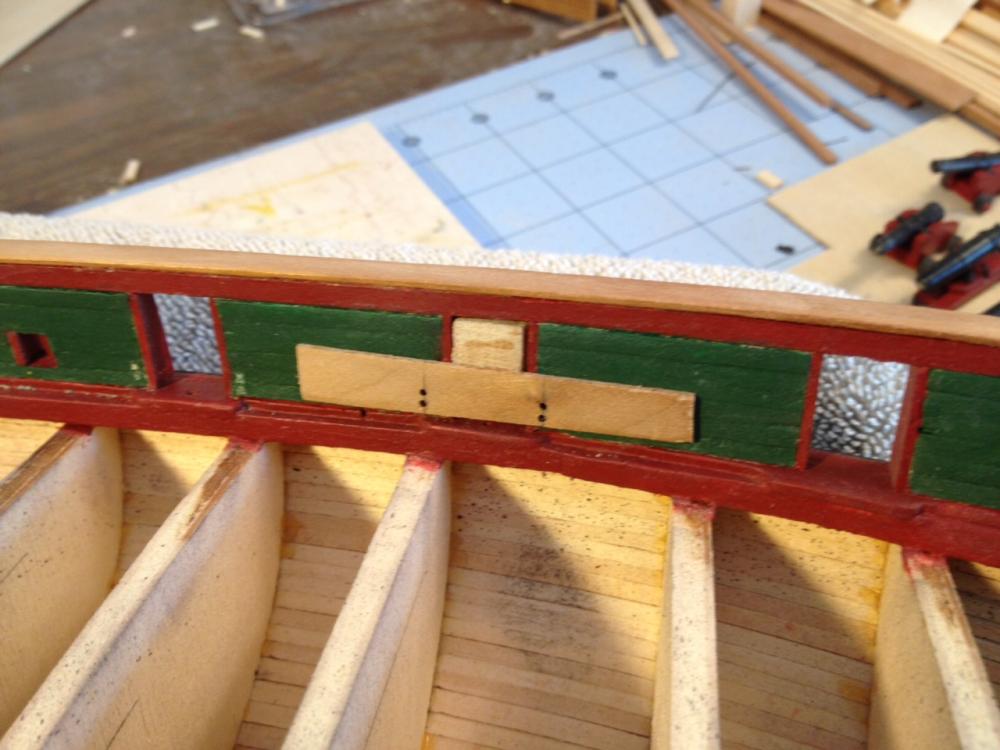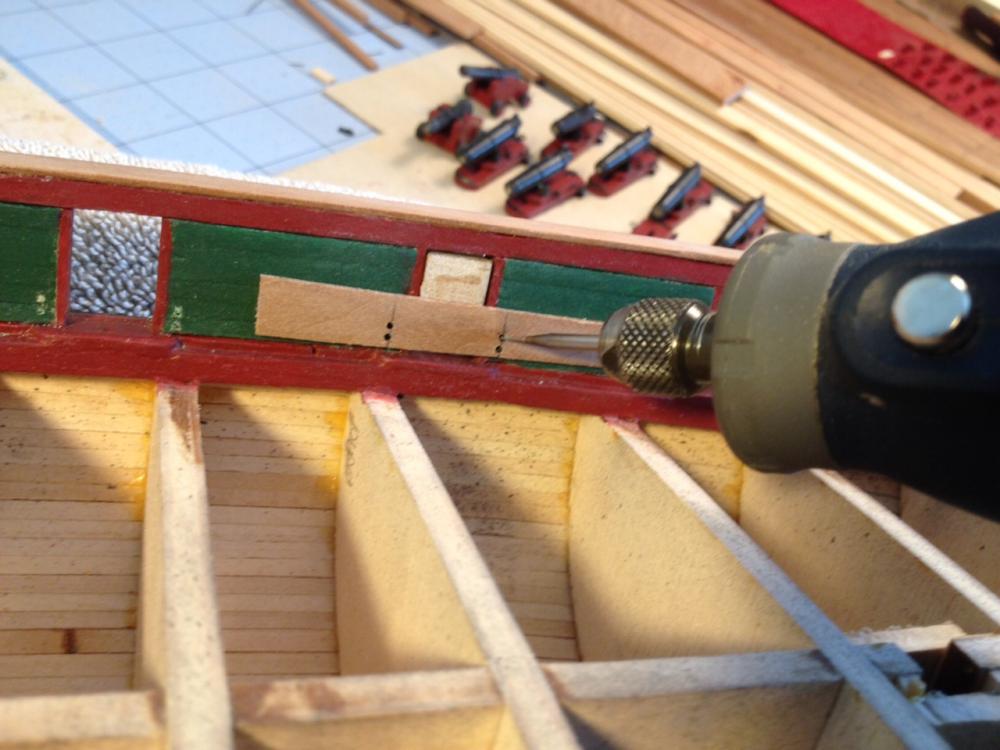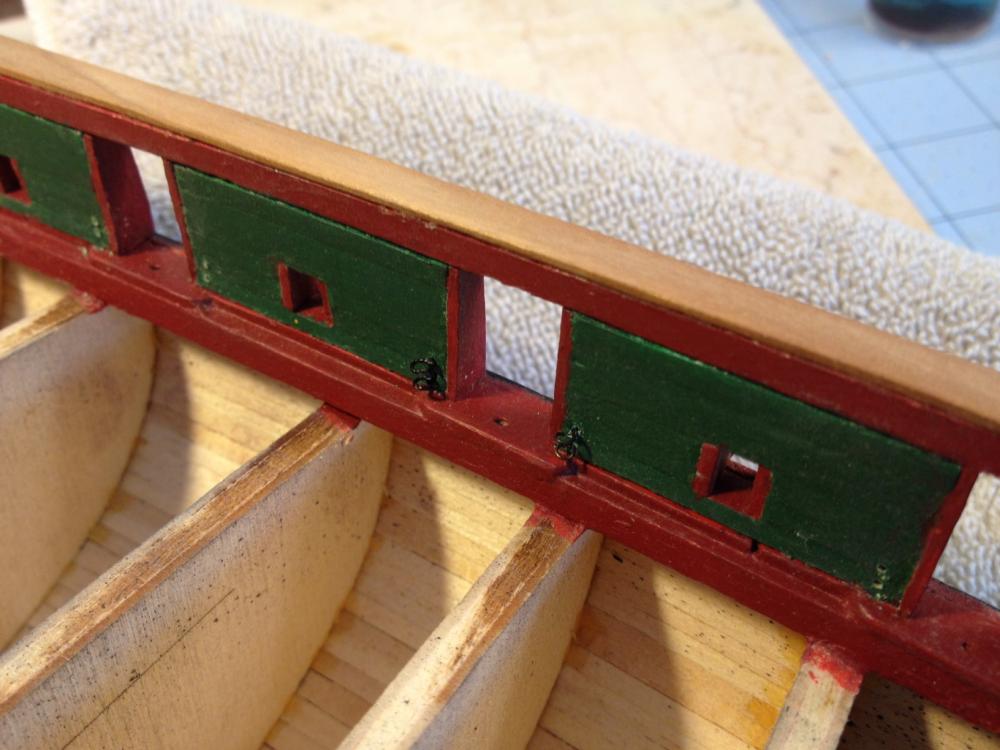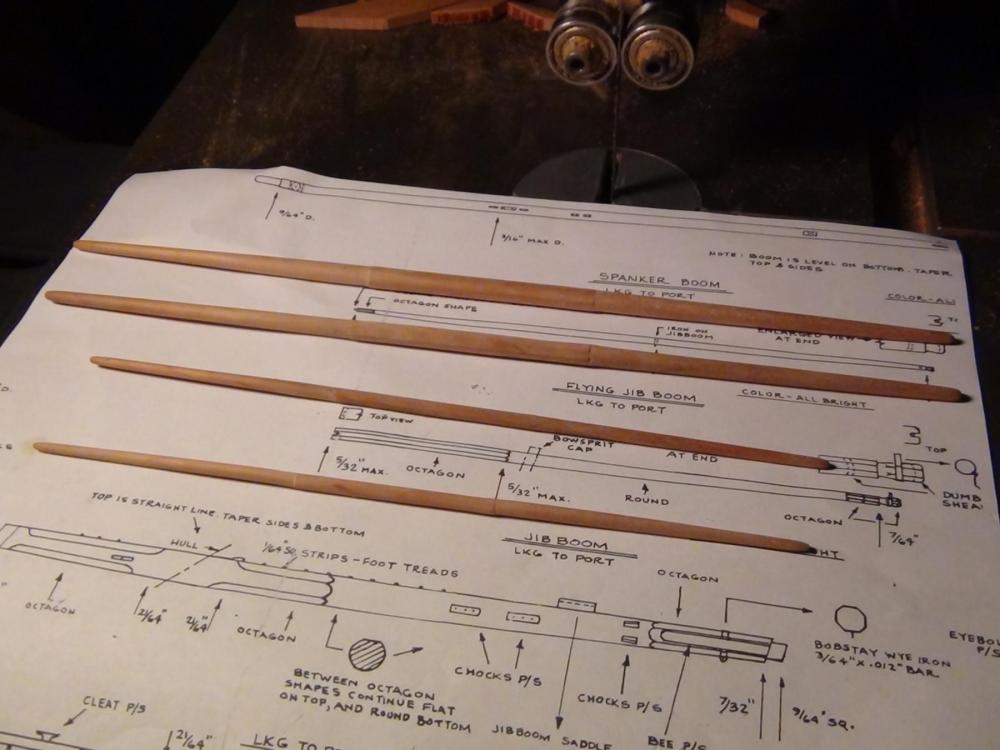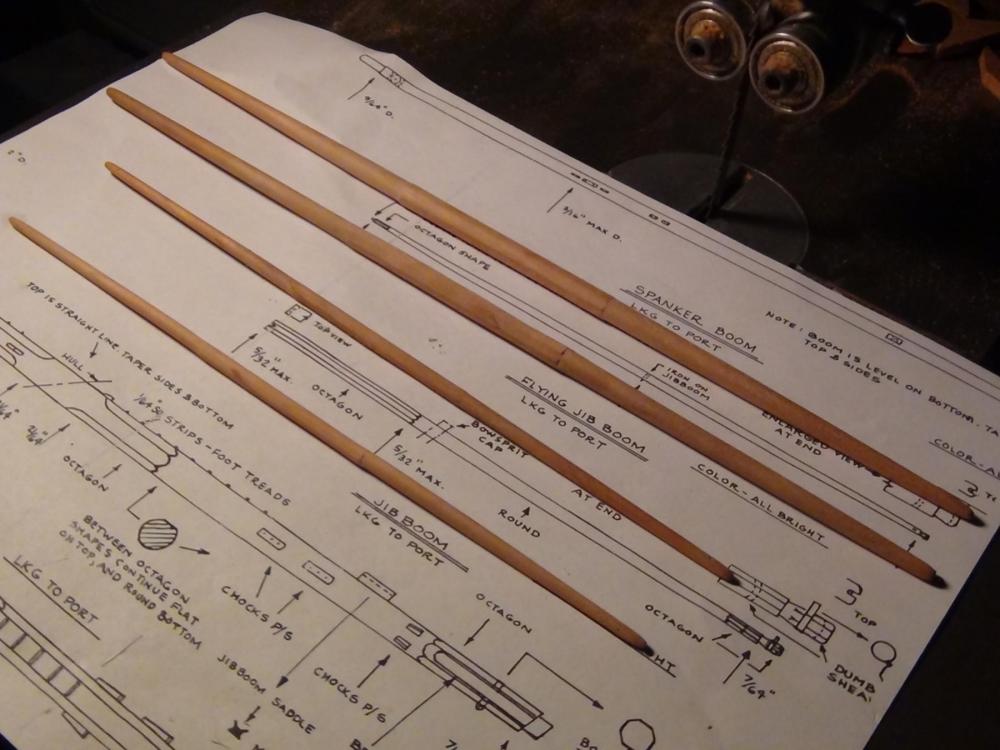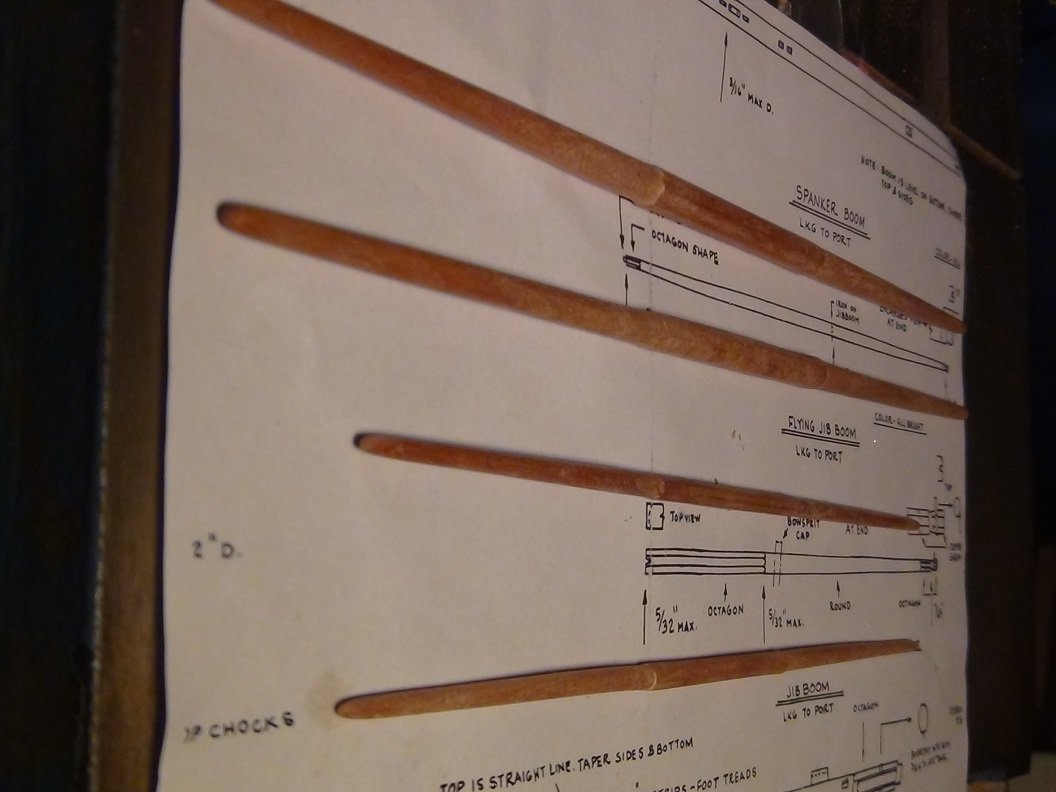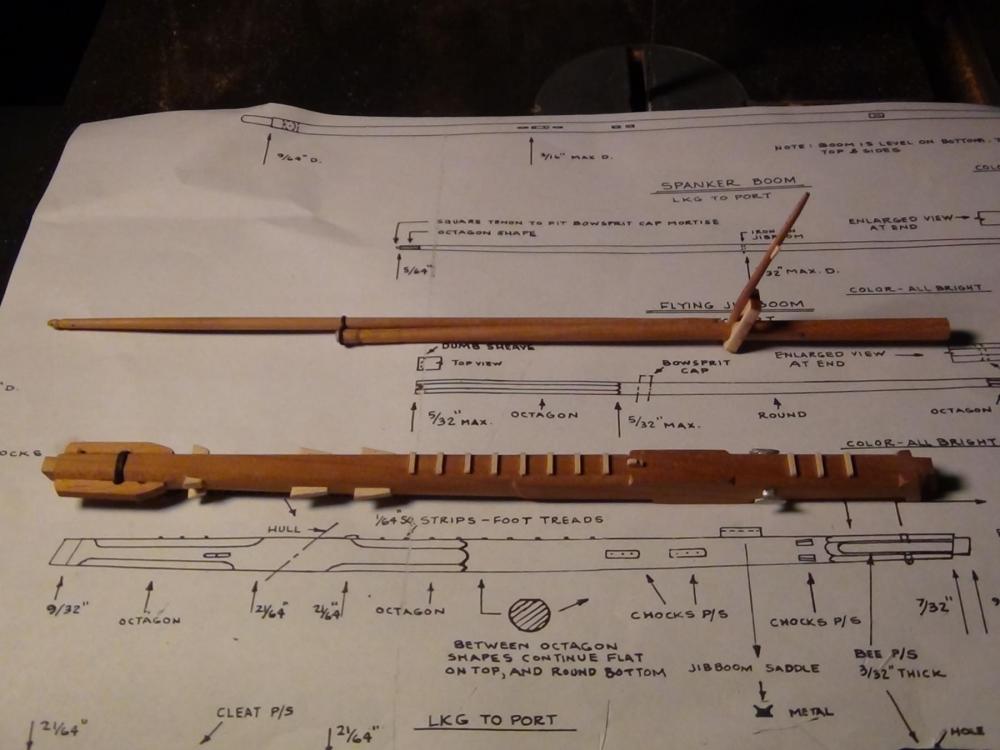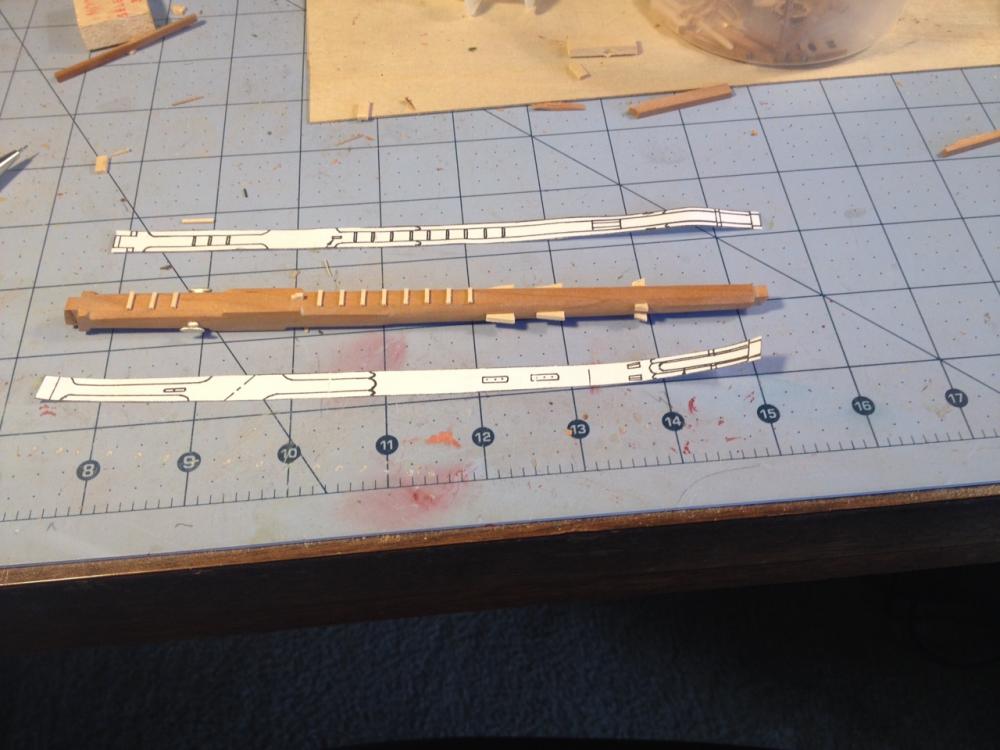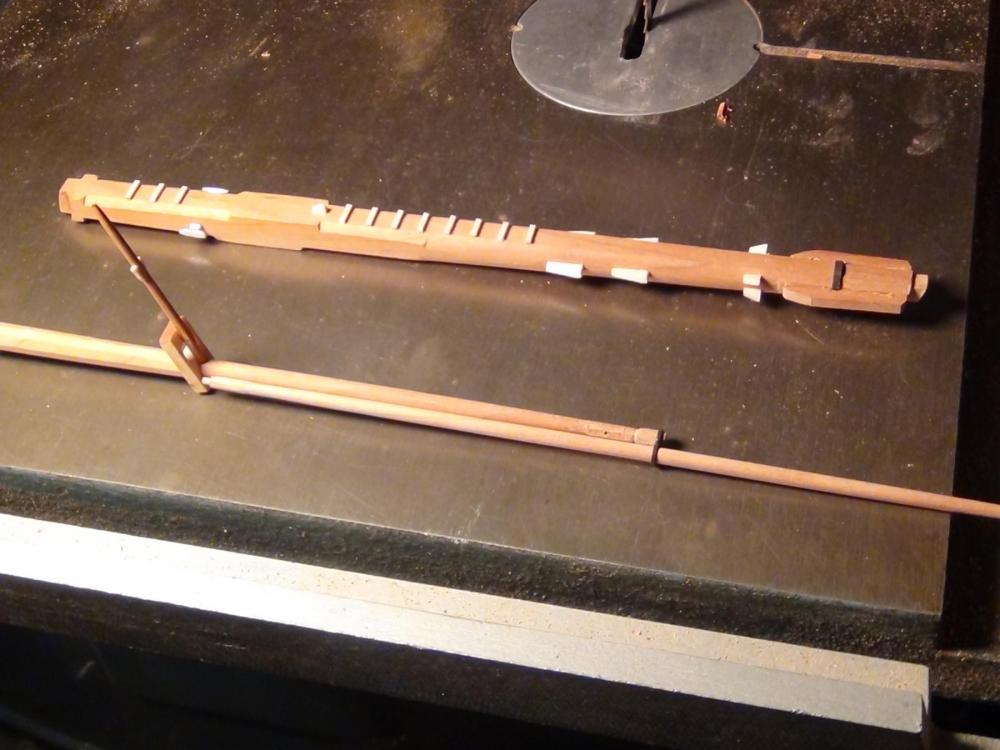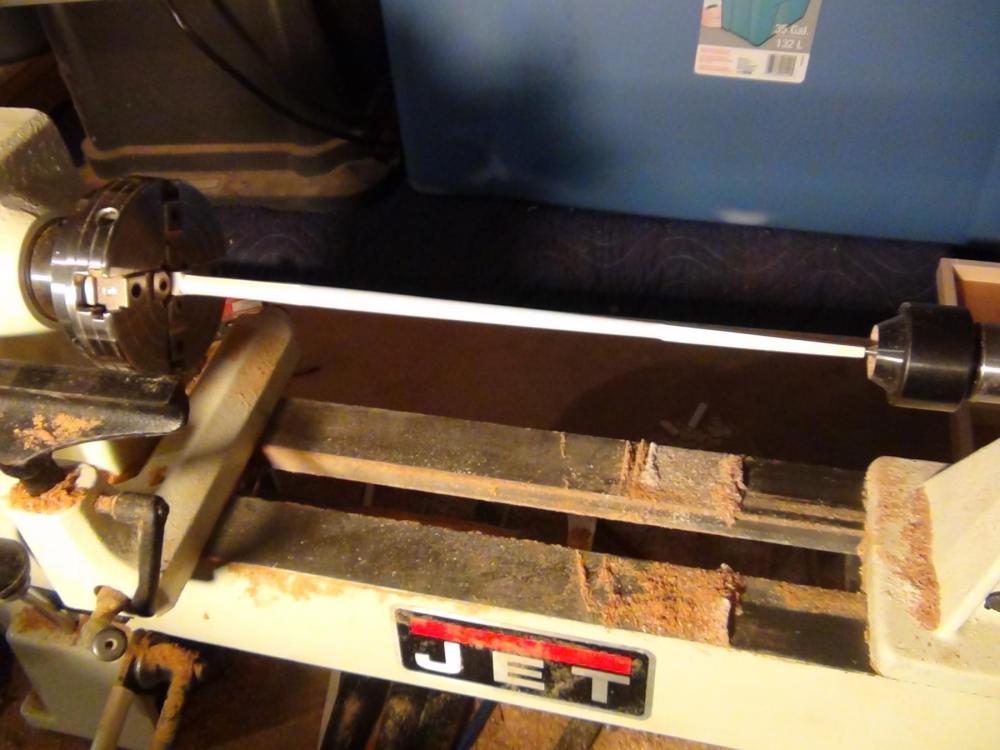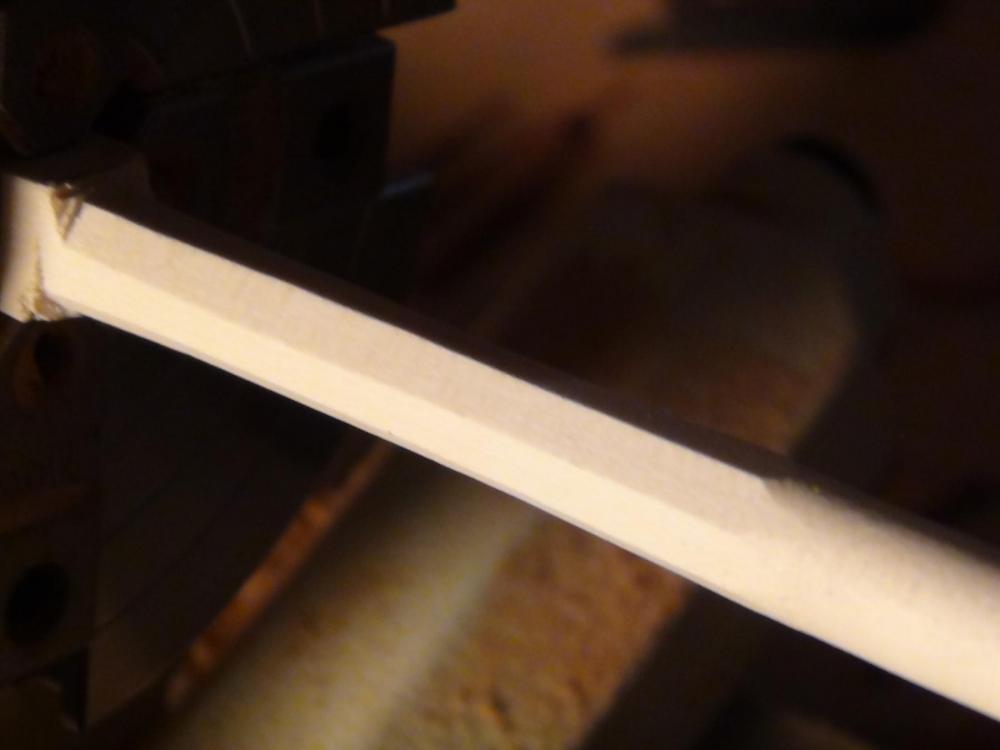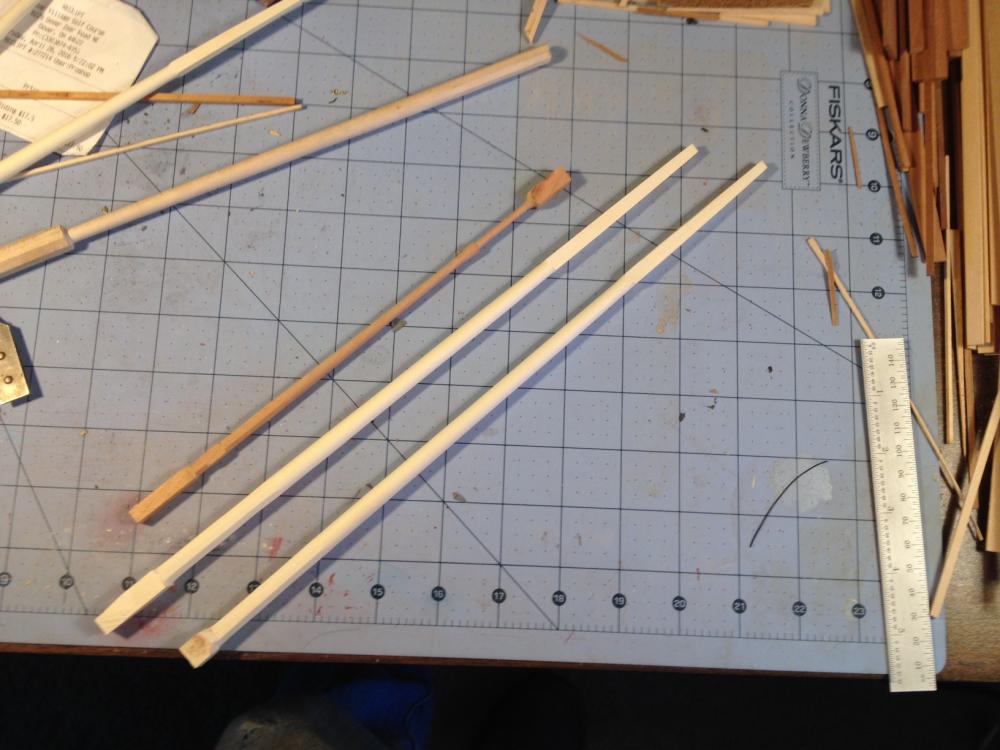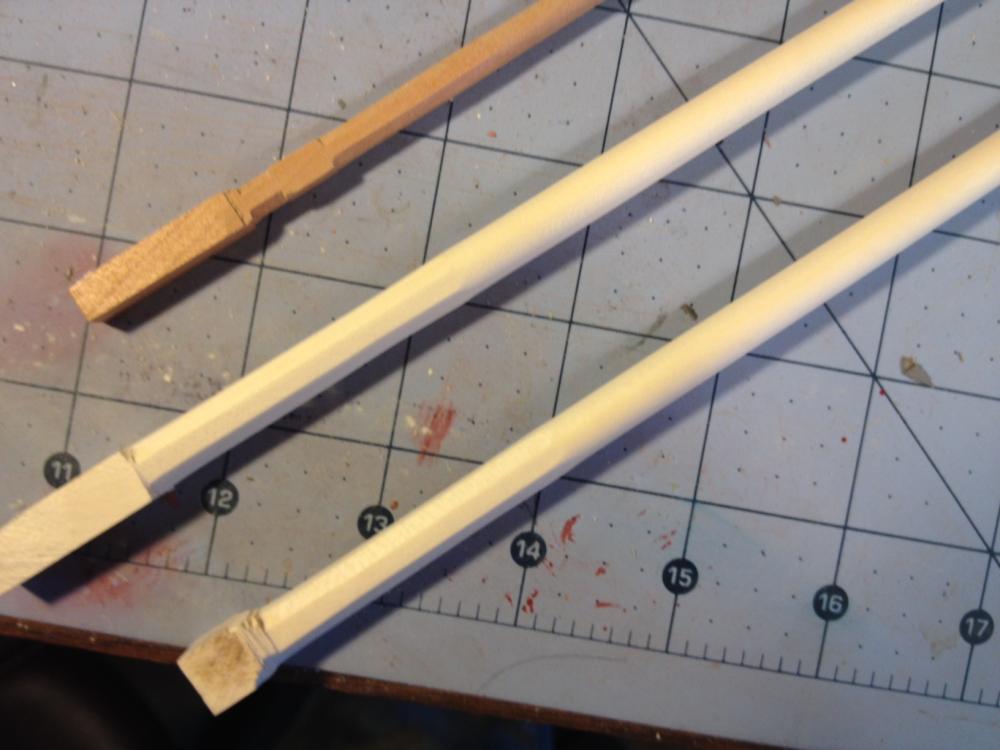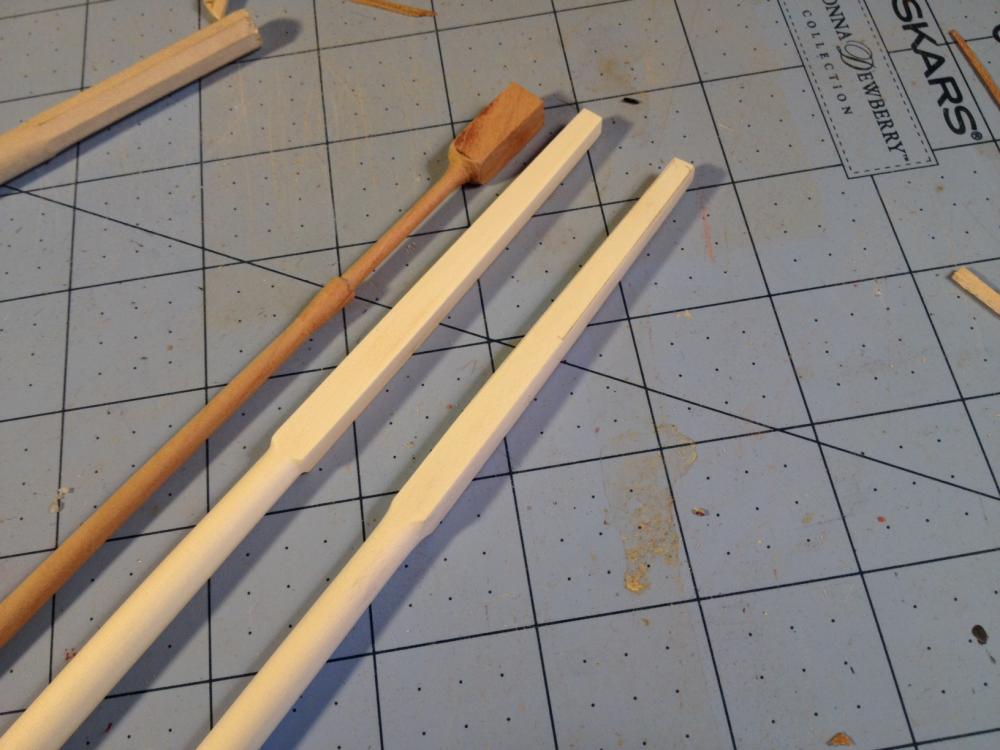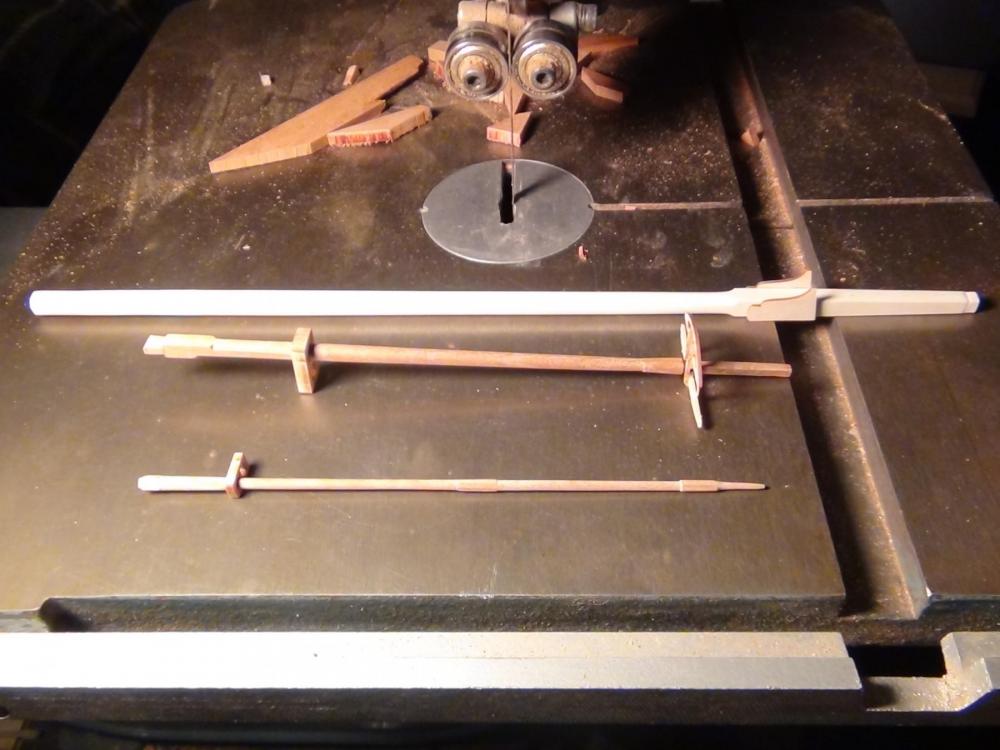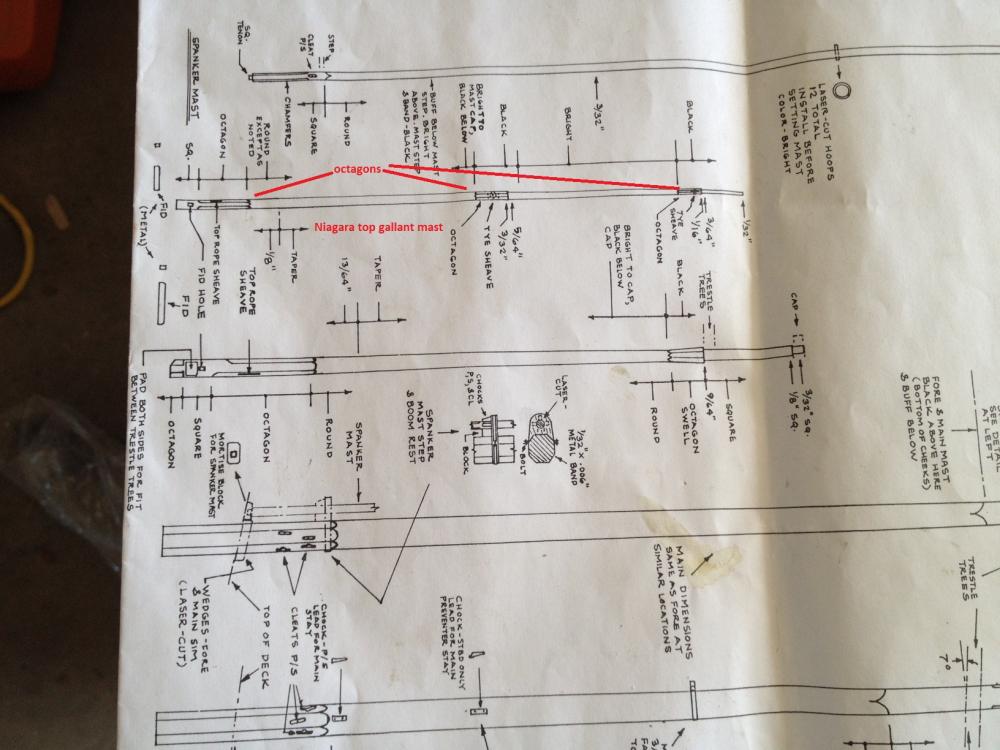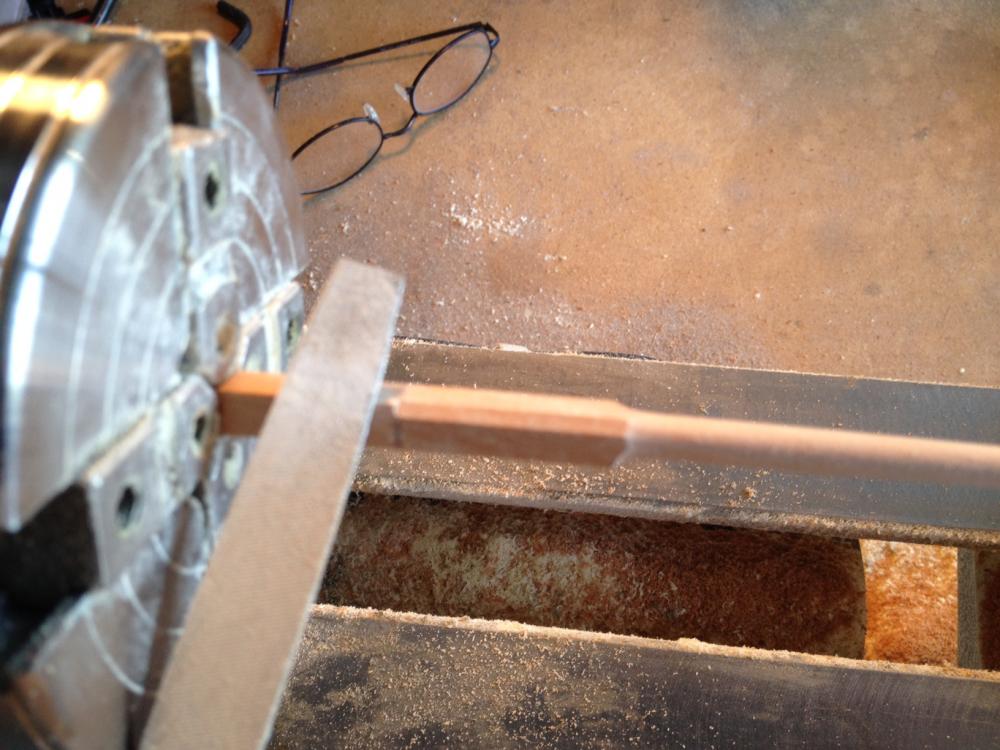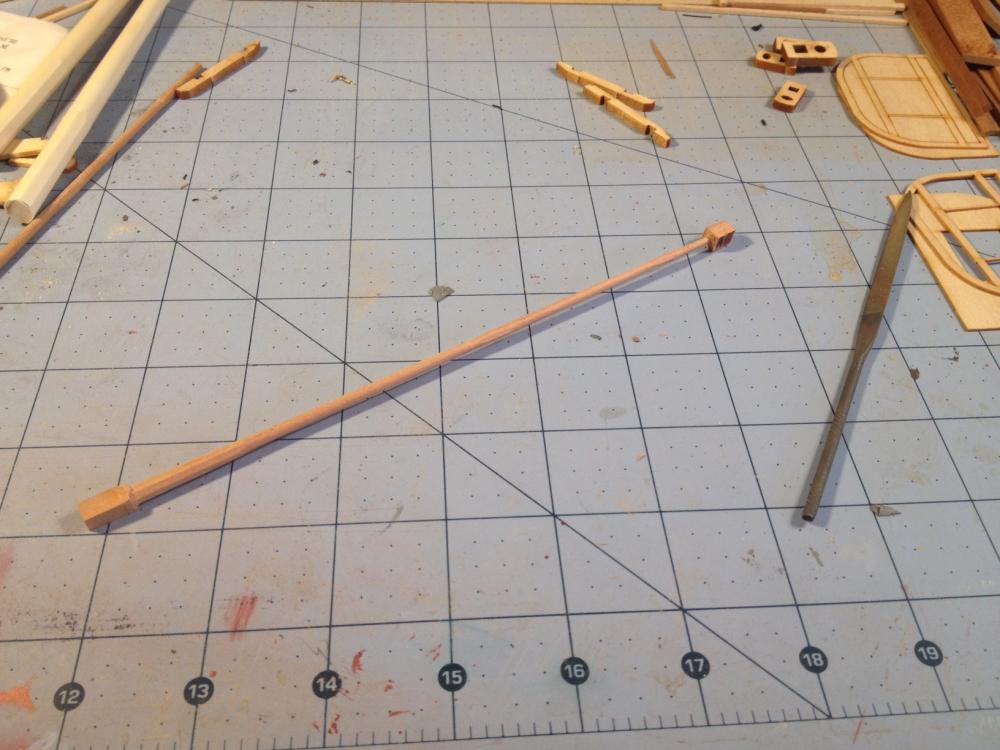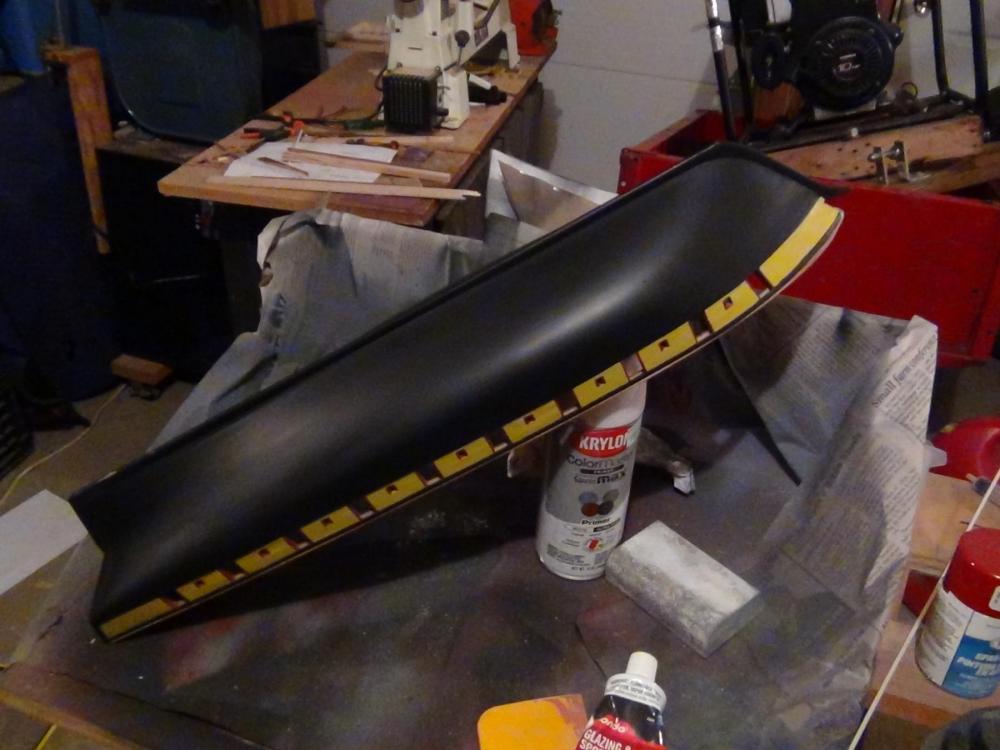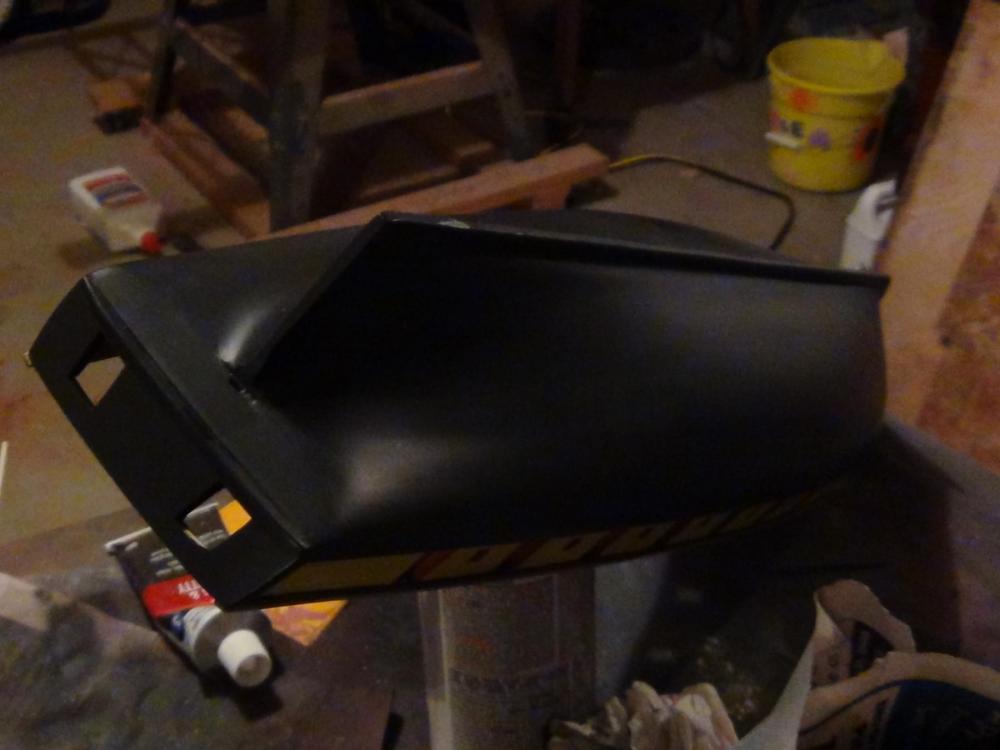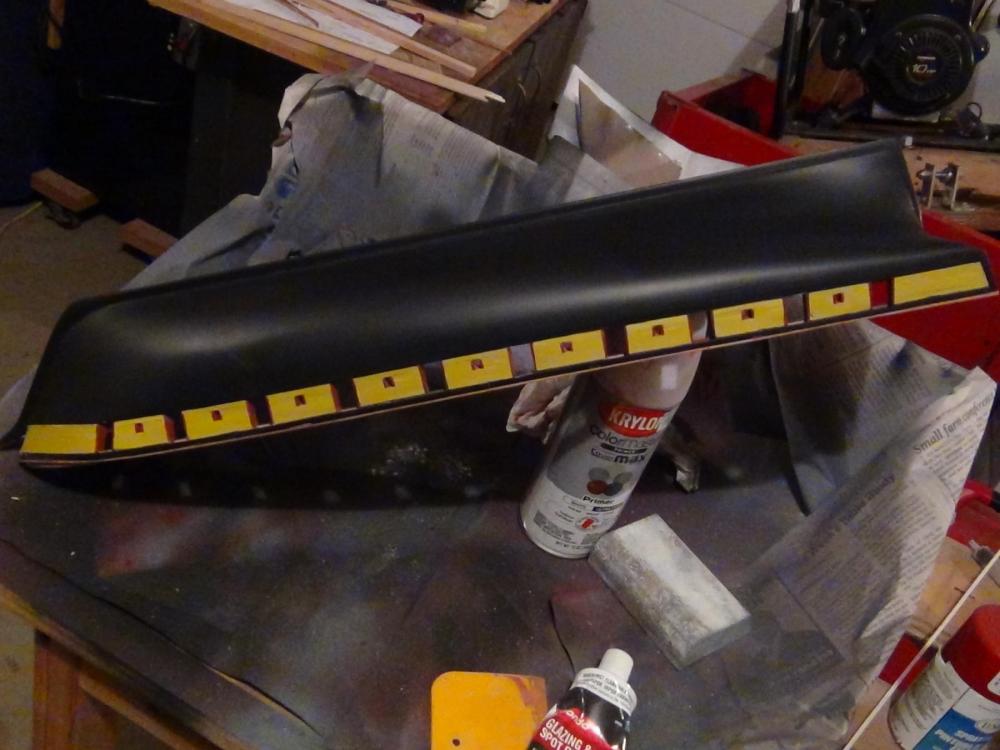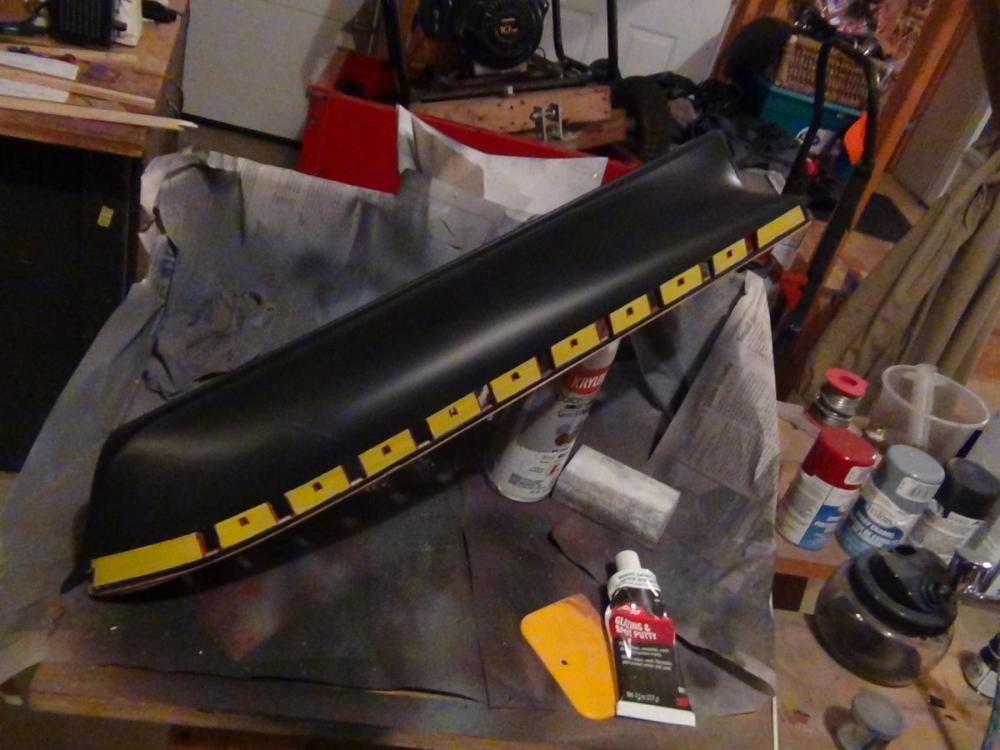-
Posts
543 -
Joined
-
Last visited
Content Type
Profiles
Forums
Gallery
Events
Everything posted by 6ohiocav
-
Mike, You were already reading my mind on how you stropped those hooks on the blocks. I am looking forward to your post on that. I think your gun rigging is spot on. It looks great!
- 843 replies
-
- niagara
- model shipways
-
(and 2 more)
Tagged with:
-
Brian, Thanks for stopping in. Paint is such a nemisis. Using the various hardwoods I have available puts me in my comfort zone with stains, dyes and finishes. I am caught between centuries with my Niagara. Both of my parents were born 30 miles from Erie, Pa, where Noah Brown built the original ship in 1813. I am more interested in the historical ship, and realize that the current ship is pretty much a replica, and the kit, which is a real good one, is of the replica. I often think of what Noah Brown would have done- or better yet- could have done. The ship and her sister ship the Lawrence were built in a true wilderness, and in an incredible short amount of time (much less than what it will take to finish my model). While blessed with a plethera of natural materials, everything else had to be sent from Pittsburgh, 70 miles south over cow paths. Was the orginal ship painted? I am not sure we know. In the end, I will be drifting back and forth between the 1813 version and the 1988 one. If anyone has ANY GUIDANCE ON THE 1813 VERSION, PLEASE SEND IT ALONG. I am totally on board with the use of boxwood. The wonderful ships on this forum, including your fabulous AVS, can't be made out of basswood. It is rather ironic. For years in my amatuer furniture making endeavors, I have searched high and low for wonderfully grained woods. Now I am looking for wood that has no grain. Go figure. Finally, you have a keen eye. The inside of my carronade barrels are not painted because I shoved a very small dowel stick in the barrels and speared them into a bar of styrofoam so I could paint them. The dowels fit so good, I actually thought I would make some red tompians, but have since abandoned that idea and will be painting the inside barrels with a brush.
- 648 replies
-
- niagara
- model shipways
-
(and 1 more)
Tagged with:
-
Mike, I was afraid you would ask me that. I don't know the size. It is from a Dremel carving kit. It is bit "105". There is no size given but it is perfect for these rings.I used it to drill all of the holes for the rings in the gun carriages. I am adding a picture of the kit. My kids got me this years ago before I started this ship, and this has come in handy on numerous occasions. I used the larger diamond tipped bit to cut out my gun ports. It is a bit hard to handle without a jig, but with a jig, the tapered collar is perfect for plunge drilling. The thick collar prevents the bit from going too deep and you can zip right along.
- 648 replies
-
- niagara
- model shipways
-
(and 1 more)
Tagged with:
-
Eyebolts .... and more eyebolts. I twisted up 160. Took most of the evening. Started with 24 gauge black and used a small drill bit mounted in my bench vice. Not very efficient. Too many thumbs, and i was handling each one way too much. too many drops and just too slow. So I used my micro plyers with rounded jaws. Wow, what a difference. Much more efficient and they never leave the jaws of the pliers until done. Not sure a topic worth photographing,but I add some just the same to show the process.
- 648 replies
-
- niagara
- model shipways
-
(and 1 more)
Tagged with:
-
Mike, The proportion on your gun is perfect to me. In post number 318, I assume you are listing exactly what you used, and that the rope you refer to you got from Chuck. I am going to do the same thing. It looks really good, and I love the hooks. My kit supplied blocks that I experimented with with a stropped home made hook looks pretty lousy. I used a black 24 gauge wire. I believe it will be strong enough to handle the rope pulls, but they don't look that great. the only good thing is that they are so small, they are hard to see, but of course that makes them really hard to make. I hope you solve your hook issue. I share your pain, or soon will be, over what is going to be an incredibly tedious job X 20.
- 843 replies
-
- niagara
- model shipways
-
(and 2 more)
Tagged with:
-
Mike, The pin vice has its place, but not for the 160 holes I just drilled this morning. No paint or stain for the cherry, just poly. Any part that the plans ask for a natural finish, I will do in cherry stock. Making the parts is good practice, but very time consuming. Some of the items that get paint I will do in the bass wood.
- 648 replies
-
- niagara
- model shipways
-
(and 1 more)
Tagged with:
-
Mike I just posted some photos of the jig I made for the carronade eyebolts. I use my diamond head dremel bit for the holes. It knocked them out quick. Don't know if it will help. You actually rigged your first carronade! Outstanding work. I am all eyes (or should I say eyebolts - I have about 30 done, only 120 left) since I too have never done this. Forgive me if I learn from your toils. let me know what you come up with for the hooks. They look great. Happy building. Darrell
- 843 replies
-
- niagara
- model shipways
-
(and 2 more)
Tagged with:
-
EYEBOLTS Following Mikiek's suggestion, I am also going to get all of the hull fixtures done before I go any further. Seeing similiar looking jigs for the carronade eyebolts, I created my own that would service my diamond tipped dremel bit. This allowed me to quickly and accurately drill all of the holes. It took all of about 10 minutes. The widened collar and the jig prevent me from plunging the bit too far into the hull making the process safe. They all turned out square and consistently placed. Now all I have to do is to twist up about 160 eyebolts ---urgh!!
- 648 replies
-
- niagara
- model shipways
-
(and 1 more)
Tagged with:
-
Catheads I finished the catheads and cut the chock rail and top rail, very carefully, to fit them in. I made these from scratch out of cherry. Turned out good. I will not actually attach them until I get the deck glued down.
- 648 replies
-
- niagara
- model shipways
-
(and 1 more)
Tagged with:
-
Mike, They say that two heads are better than one, and I can say that every thing you listed in your last post had been on my mind for weeks. About half of my pin holes on the planksheer are out of whack for the carronades. That is a pretty common occurence noted by fellow Niagara builders. At one time I was going to fix that before I put the top rail on the bulwarks, but opted to wait until i actually built the guns. That will have to be fixed. I had an idea for a jig for the bulkhead holes, and will work on it over the weekend to see if it works. I was going to make my own eyebolts by twisting up some 24 gauge black wire. I think they seat better with some CA. I also figured that I would rig the carronades before I added any of the deck furniture so that I could spare as much room for my thumbs as possible. On that topic, I am not to thrilled with the blocks that the kit supplied for this process. They seem out of scale (too large). I was thinking about acquiring some after market blocks for this purpose, and settled on 3MM. Do you have any thoughts on that? Also, have you decided what pins to use for the guns, and how are you planning on securing them to the deck. I have some small steel pins supplied with the kit, but don't exactly know what they are for. That Hawse pipe is scarry for the very reason you listed. I have had the same concerns. I thought I would start on the outside hull and hope that the hole hits the right spot inside. Of course we have to add a piece of strip wood on the outside of the hull. I am at my office and don't have my plans and i cant remember what it is called, but in shipwright lingo, it is used to keep the anchor chain from destroying the planks when it is raised. That might give us some leeway if we drill from the inside out. We could cover up any mistakes on the outside when we install that piece. Darrell
- 843 replies
-
- niagara
- model shipways
-
(and 2 more)
Tagged with:
-
Thanks for the insight. I have seen those jigs, and I need to break down and make some. Good suggestion.
- 648 replies
-
- niagara
- model shipways
-
(and 1 more)
Tagged with:
-
Looking great Mike. Did you free hand the eyebolt holes for the carronades or did you use a jig. I also like your idea on the order of installation of the deck furniture. I hope you don't mind if I follow along to see how that works out. I am a bit behind you and have been hesitant to install all of the parts I have made to the hull and deck until I figure out the best order of things. From the bottom up sounds like a winner. Good luck.
- 843 replies
-
- niagara
- model shipways
-
(and 2 more)
Tagged with:
-
Ken, I have been admiring your Constitution build from afar, and go back to your wonderful NIagara often before I do anything on my Niagara. Now that I have become active on the forum again, I just wanted to say thanks for all of the "advice and inspiration" that you never knew you gave me. Having just done my deck by using cherry veneer strips on birchwood plywood, and being alerted by many on this forum to the impact on height for deck carronades, and following your lead, I actually did something right - the first time! Thanks again. Darrell
-
Yards I worked on the lower yards. Turned them on the lathe and filed the octagons with the flat file using my index key on the Jet lathe. I learned a few things. Since these all will be painted black, I experimented with some of the wood in the shop before finally settling on my trusted cherry. I had some scrap holly and tried to turn one, but found the holly was not strong enough and as I got down to the small diameter, the length of the lower yard created too much wobble. I didn't like maple either, and as expected, my white oak had too much grain. Cherry was the best. Next up will be the upper yards. I don't think I can turn them on the lathe since they are so thin, but I will try. The alternative, the dreaded filing them by hand. All I can say is that I have gained a lot of experience doing that. Some photos of the finished yards.
- 648 replies
-
- niagara
- model shipways
-
(and 1 more)
Tagged with:
-
Mike, I am going to look into the suggestion of the crown tip for the Iwata. I had no idea that was available. thanks for the tip. Darrell
- 648 replies
-
- niagara
- model shipways
-
(and 1 more)
Tagged with:
-
The bowsprit and boom. the ultimate challenge! I have to be honest when I say I spent months thinking about how to create the Niagara bowsprit. It has a very complex shape. The top is totally flat with no taper. The bottom has two tapers, one at the base and then one at the end. At the very base is a notch and then about the first one third of the overall length is a series of octagons. From there going outward, the sides and bottom are rounded with a slight taper. That all ends with a full tapering octagon. My first idea was to follow along with the process I used for the masts - mark off the square portions and file the octagons and turn the round portion on the lathe. That would be easy enough. The problem however was that I had to then figure out how to sheer off the top to create the flat non tapered surface. That had to be done after the turning, and figuring out how to create a jig, or special fence to use with the saw to create that true flat surface we beyond me. Once again, the only way was to do it by hand. I started with a square stock of cherry. The first task was to create the tapers. I cut out pictures of the bowsprit from the plans and traced the lines on the stock and carefully did the tapering on my bench disc sander. Not too bad, but very delicate. From there, I mounted the piece in the lathe and filed the octagons using my indexing screw. Again, I lined up the surface to be filed on top and kept a horizontal level with the file. After the octagons had been cut, I had no choice but to file the rounded surface with a file. I marked the very top (where the surface has to remain flat) with horizontal lines to make sure that I did not touch it with the file. The jibs were turned on the lathe. They also have their share of octagons. The bowsprit was probably the only thing I actually did from start to finish and got it right the first time. I finished the bowsprit with bass wood steps and chocks. I used cherry to create the bees (traced them from the plans and cut on the band saw). I also molded the iron band from the kit supplied brass and blackened it. the darn thing turned out so good, I am adverse to painting it the required black. Any suggestions out there on the bowsprit? paint or no paint.
- 648 replies
-
- niagara
- model shipways
-
(and 1 more)
Tagged with:
-
In reviewing my last post, I realized I added a photo with a picture of one of my top masts that I had to subsequently scrap (an oft occurrence). For those of you that are familiar with the Niagara plans, the portion above the basket is square. I missed that on my first attempt and went on my merry way and turned it round. Off to the scrap heap. In the last photo, you will see the top mast with the proper square portion above the basket. By the way, I filed the basket to the tapered octagon shape the same way I did the other octagons and the square portion above that had to be free handed on the band saw. I ruined two fully turned and finished top masts trying to get that right. In all, I had to make 7 top masts to finally get 2 right.
- 648 replies
-
- niagara
- model shipways
-
(and 1 more)
Tagged with:
-
Mast and yard material Since I decided to forego using the kit supplied round stock for the masts and yards, I had to decide what to replace that with. For the lower masts, I wanted a light colored wood that I could stain. All the tops and yards would be made out of my cherry stock. I experimented with a hard maple for the lowers. After it was turned, I found it to have to much grain. Following a tip from this forum, I decided to try some holly. I was able to pick up a single short board at my local Amish wood supplier. I have never used holly - indeed - did not even know you could find any. It is very white, just what I was looking for, and no appreciable grain. While it was pricey, it was a dream to work with. While not as tough as hard cherry, it turned beautifully and filed true. Again, I started with square stock, turned the round portions, and then filed the large octagon at the base. At the top, the mast is square, and gently tapers to a square notch. I created the taper by carefully marking the mast, and removing the material on my bench disc sander with 400 grit paper. The finished holly is stunning. The pictures do not do it justice. I will be anxious to see how it looks after a few coats of finish.
- 648 replies
-
- niagara
- model shipways
-
(and 1 more)
Tagged with:
-
Reaching back in time in a continuing effort to bring this log up to date, I have some photos and narrative of the experience of building the masts, yards and bowsprit. For the masts, I opted to go with square stock that I could turn on my mini lathe. And for the Niagara, that meant dealing with all of the various octagon portions of the masts and yards. At first, I thought that would be easy enough. We always plane down the corners of our stock creating a rough octagon shape before we mount it in the lathe just to take the stress off of our gouges. So I thought I would simply do the same with the square mast, and then turn the remainder round to get it into shape. The problem though was the small size and the precision necessary for my keen eye. Getting an acceptable true octagon shape was an incredible challenge. Nothing from my wood working experience worked. My table saw with the blade at 45 degrees wasn't going to do it. I took a short glance at that and realized that would be a waste of time. I tilted the table of my band saw to 45 degrees, and actually ran a few pieces of scrap through that and a temporary fence I made and realized that the cut could not be kept true enough. My octagons had waves. I even mounted a 45 degree router bit on the router table, and ran some stock through that. It actually worked the best, but to be honest, it was just not safe enough for me to feel comfortable. And I was using material for the main masts, the largest stock and this was just too small. So, I had to resort to the tried and true method of simply doing it by hand. Something that I am finding to be the case in most of what I have done on this ship. In the end, it actually was not too bad. I had to purchase a Nova 4 jaw mini chuck for my lather to accept the small stock. After mounting, I marked the stock for where the round parts and octagon parts were, and turned the round parts to the proper diameter. I then took a flat file and began filing the square areas designated to be octagon shaped. My Jet mini lathe helped me with this. It is equipped with an indexing screw, which when pushed in, locks the chuck firmly in place. That would allow me to line up the area to be filed to the very top of the stock, and keeping the file level at the horizontal, I would carefully file down the edges. Once I filed off a small amount of the first corner, I simply reset the index screw for the next corner, and slowly worked my way around the entire piece. Once the corners were knocked down, I worked on the flat surfaces, and together brought all down to be flush with the rounded portions. The process has worked pretty well. I have used this for all of the masts and yards. I spent a 3 weeks in April just working on them, and still don't have them done. Working on my lathe however is actually fun, and working with such small stock has been educational. I have never turned any table legs this small! ... or at least ones that I would want to sit on. Here are some photos I took while turning one of the top gallant masts, THE smallest one, with 3 very fine octagon shapes. In the last photo of the final product, the octagons are hard to see, but trust me, they are there.
- 648 replies
-
- niagara
- model shipways
-
(and 1 more)
Tagged with:
-
This is probably a good time to share something with my fellow ship builders. After I finished planking the hull, and sanded and painted it, I could not get over the new feel of the ship. For months I had been handling this wooden frame with multiple sharp edges and such. And now, a smooth shaped surface designed to cut through the water to beat any windward challenge. I could not get over the feel and the weight of the ship. Holding onto it created a completely new sensation. Forgive me if this sounds a bit corny but I also had to overcome the strong urge to float that baby in the bath tub, but my son disavowed me of that crazy idea.
- 648 replies
-
- niagara
- model shipways
-
(and 1 more)
Tagged with:
-
Going back in time again, I thought I would post some photos of the hull and discuss the painting process. I learned long ago in my styrene plastic model days, that any great build can be ruined very quickly by an average paint job. My wood working experience has taught me much about stains, dyes and finishes, but paint can be a bit nerve racking. I decided to paint my hull flat black. No green. My decision was based mostly on asthetics, and because the large model of the Niagara at the Presque Isle Museum has a black hull, and it looks great. I have seen some research on this topic posted on the forum, and I have to agree that the original Niagara Hull was not painted green. I of course realize that this kit is not of the original Niagara, but the replica ship recreated by the State of Pennsylvania in the 1980's. Yet, I cannot even find a photo of the current Niagara with a green painted hull. It looks copper colored to me, and when I actually toured the ship years ago, I never even thought to look at the hull paint, even if I could have seen it below the water. So, Master Modeler (MM) flat black was the choice. That brand was chosen for two reasons. First, it is a good quality modeler paint and readily available. More importantly, it fit my plan. I have an Iwata Eclipse air brush. It is a great product. I recommend it. However, spraying large surfaces with a fine airbrush can be a bit tedious. What I have done is to use commercial spray cans for rough coats and then the airbrush for the final finish coat. I was able to purchase a small can of MM flat black and a small MM bottle that allowed me to accomplish this. I did not take any photos of the hull during the prep work. I carefully masked off the painted bulwarks, inside and out. I then sanded the planking and borrowing a great idea from XKEN from his Niagara build, used an automotive glazing putty to fill in the seams. It goes on smooth, dries quick, and is easy to sand away (in fact, almost too easy, so be careful). I followed that with a finish sanding and a coat of MM Gray primer from a can. The primer will reveal any defects, so a little more glazing here and there, and then another coat of primer. After the surface was acceptable, which for me, required quite a bit of sanding to reveal the plank edges, I was ready for the paint. I used two coats of flat black from the MM can for the initial coats, being very careful not to over spray the surface (commercial spray cans emit large amounts of paint). I used 600 grit sand paper for light sandings in between, and then went to the airbrush for the final coat. I used the MM paint from the bottle, with about a 50/50 paint to thinner mixture for that last finish coat. Despite my fears, the hull turned out really good. Here are some photos of the final product.
- 648 replies
-
- niagara
- model shipways
-
(and 1 more)
Tagged with:
-
Mike, Thanks for the love. However, this work is a cumulation of all of the tips and techniques I picked up by our fellow Niagara builders, and other model shipwrights on this forum. The talent here is unbelievable. As a follow up, the picture I posted of the circular flattened wire used for the carronade carriages is misleading. I took the picture after I cut all of the metal bands, and the flattened wire I used for the photo was a scrapped piece that did not pass my quality control department (there is a lot of stuff in that pile). To get the right radius, the circle has to be tighter, about 50% so. Just a heads up. I feel like I owe you a lot being that I have referred to your log repeatedly over the past several months. So I will try and give back. Darrell
- 648 replies
-
- niagara
- model shipways
-
(and 1 more)
Tagged with:
-
Mike, I forgot to add. I happen to pick up three small bags of wooden belaying pins, stained dark brown, made my Model Expo from a hobby shop in town. They were so dusty, they had to have been there for years. Unfortunately, they are just a little too large, and i don't have enough (45) to do the entire ship. Cutting them down however will be a lot easier than making them from scratch. I therefore have to assume these are still available, I just have not had the time to search this out. Darrell
- 843 replies
-
- niagara
- model shipways
-
(and 2 more)
Tagged with:
-
Mike, I have been following your build log for months but never thought I would have anything intelligent to add. On this issue however, I do have some experience. I too built my Niagara Deck "off" the ship (cherry veneer strips on birch plywood sheet). I used cherry to avoid having to deal with the challenges of staining the soft bass wood. I also have not glued the deck down and don't plan on doing so until it is absolutely necessary so as not to damage it. I learned a lesson on that by painting my bulwarks, planksheer, waterways, and gun port linings before installing and then having to repaint many times over to repair damage that occurred during the build process. I also concur with your concerns over restaining your deck. It is very hard to predict how the basswood will take isolated applications of stain. Heck, full applications of stain to virgin soft wood will create blotches. Keeping it between the planks is really good advice. Good luck doing it. I for one know how tedious that will be. We are at about the same place in our projects and now that I have found the courage to reveal my Niagara to the forum, and to the incredibly talented modelers like your self and others, I will follow along more conspicuously. Darrell
- 843 replies
-
- niagara
- model shipways
-
(and 2 more)
Tagged with:
About us
Modelshipworld - Advancing Ship Modeling through Research
SSL Secured
Your security is important for us so this Website is SSL-Secured
NRG Mailing Address
Nautical Research Guild
237 South Lincoln Street
Westmont IL, 60559-1917
Model Ship World ® and the MSW logo are Registered Trademarks, and belong to the Nautical Research Guild (United States Patent and Trademark Office: No. 6,929,264 & No. 6,929,274, registered Dec. 20, 2022)
Helpful Links
About the NRG
If you enjoy building ship models that are historically accurate as well as beautiful, then The Nautical Research Guild (NRG) is just right for you.
The Guild is a non-profit educational organization whose mission is to “Advance Ship Modeling Through Research”. We provide support to our members in their efforts to raise the quality of their model ships.
The Nautical Research Guild has published our world-renowned quarterly magazine, The Nautical Research Journal, since 1955. The pages of the Journal are full of articles by accomplished ship modelers who show you how they create those exquisite details on their models, and by maritime historians who show you the correct details to build. The Journal is available in both print and digital editions. Go to the NRG web site (www.thenrg.org) to download a complimentary digital copy of the Journal. The NRG also publishes plan sets, books and compilations of back issues of the Journal and the former Ships in Scale and Model Ship Builder magazines.




